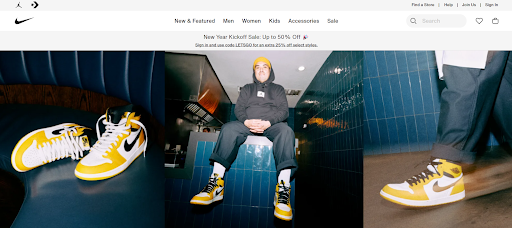
You sign up for an account with one of the best website builders. You're staring at dozens, maybe hundreds, of pre-designed website templates. They all look amazing in the preview, but which one actually fits your long-term business requirements?
Choosing the wrong template wastes time and money. You'll face redesigns expenses, functionality issues, and low engagement rates. But not if you know what you’re looking for.
At Techradar, we’ve reviewed 80+ website builders and tested popular templates for Wix, Hostinger, Squarespace, Shopify, and more. Over time, we’ve narrowed down the formula for choosing a perfect template down to five important things. Read all about these 5 top suggestions below.
1. Show off your brand identity
Your brand is your identity, and in the world of website templates the most common mistake that small businesses make is choosing elaborate templates that don’t align with their brand.
Sure, snazzy templates may look great, but they will also require a lot of customization work to make it your own, and you may still be “off-brand,” resulting in a sloppy presentation. This is why you should go with a template that complements your brand. Think about your brand colors, fonts, style, and overall tone when picking a template. For example, a slick luxurious brand is unlikely to pick a bright, crowded template for their website.
A great idea is to take inspiration from other well-branded websites, such as Nike. Nike’s website is not just visually appealing; it is also “on brand,” meaning that it resonates with the company’s personality.

Another great example is Apple’s website, which aligns with its brand perfectly, thus creating a seamless experience for visitors.

Both of the example websites follow simple design principles, which you can also follow to help you adjust templates to meet your needs. If you’re looking for more tips on how to best design your website to meet your customer needs, check out our tips to get your website design spot on.
2. Plan out the user journey
Your template must guide visitors toward your goals. Map out every step users take on your site. Start from their landing page and trace their path to conversion.
Think about your typical visitor's mindset. Are they comparing products? Looking for quick information? Ready to buy immediately? Your template should match their mental state with appropriate layouts and calls-to-action.
For ecommerce sites, consider templates like Shopify's Motion. These prioritize product discovery and smooth checkout flows. Service-based businesses benefit from templates like WordPress's Astra or GeneratePress, which excel at lead generation layouts.
3. Look for SEO-friendly features
Search engines favor websites with clean code and fast loading times. Your template choice directly impacts these factors. Check the template's HTML structure and CSS organization before committing.
Mobile responsiveness isn't optional anymore. Google's mobile-first indexing means your template must perform flawlessly on smartphones. Test potential templates on various devices and screen sizes.
Schema markup support gives you a significant SEO advantage. Templates that include structured data help search engines understand your content better. Look for templates that automatically generate proper meta tags and heading structures.
For example, popular SEO-optimized templates include Newspaper for WordPress and Empire for Shopify. You can also use tools like Wix’s built-in AI text generator to create contextually-relevant titles, headings, and meta descriptions.
4. Invest in customer research
Your customers' preferences matter more than your personal taste. Survey existing customers about their website experience. Ask what information they seek most often and how they prefer to navigate.
Analyze your current website data if available. Hostinger’s heatmapping tools reveal where users click and scroll. This data can guide template selection by showing which layouts work best for your audience. Also don't ignore bounce rates and conversion paths in your Google Analytics.
Consider your industry's conventions too. B2B software companies need different layouts than fashion retailers. Study successful competitors' websites to identify patterns your customers expect. This research prevents template choices that confuse or alienate your target audience.
5. Keep practicality front and center
If you are more aesthetically inclined, you may want to focus too much on all the creative bells and whistles a template offers. We’re here to tell you that you should focus on the end result first and visual appeal second.
Sure, look and feel is important, but your business is why you’re creating a website in the first place. For example, if you’re looking to sell something, then the template should support online payments and shopping cart integration. And if you’re trying to promote a newsletter, the template should include built-in subscription forms and membership management.
All in all, your website is a powerful tool that helps you achieve your goals, so the template you choose should do the work for you. A company website should inspire confidence and expertise, an ecommerce site should highlight items and have great search options, a parenting blog should be vibrant and colorful. All of these elements will help you determine which template to go for, then work on aesthetics.
Picking a template for your website: Summary
There it is! All five quick tips will help you choose the best template possible and make it your own. To summarize, consider your brand image, prioritize the user journey, ensure search engine friendliness, research your audience, and always keep practical functionality in mind. Armed with these tips, you will be more confident to dive into the world of website templates.







